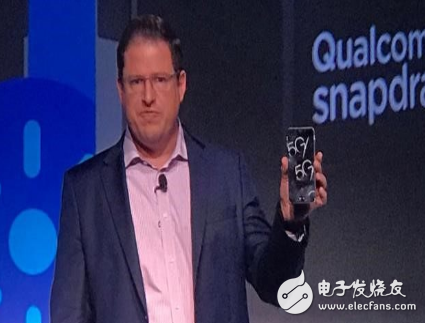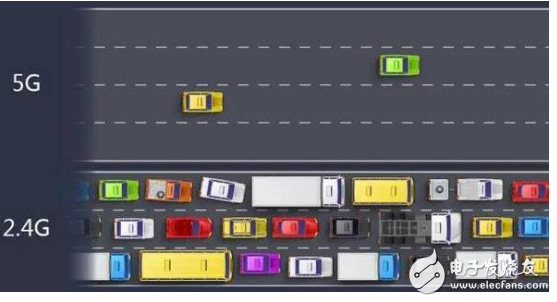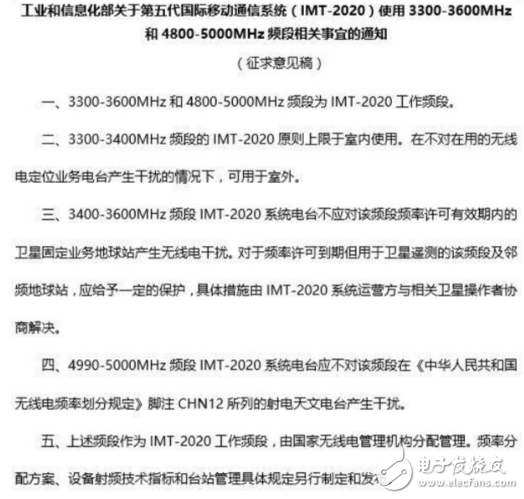5G has no standard yet, how does Qualcomm achieve 5G rate?
Recently, Qualcomm's latest 5G-enabled mobile terminal chipset is really eye-catching, but there are some people who doubt that the 5G standard has not yet come out? How did Qualcomm pass the test and develop a 5G mobile terminal chipset? In fact, this does not have to worry, Qualcomm is ready.
Beijing time on October 17, 2017, Qualcomm held a press conference in Hong Kong and announced the launch of a 5G mobile terminal chipset. Although the 5G standard has not yet been finalized, according to Qualcomm, this chipset can achieve a transmission rate of more than Gigabits per second, and has been successfully tested in the 28GHz frequency band that 5G may be deployed. Because of this, many analysts believe that Qualcomm once again led the 5G era, leaving competitors behind.

However, according to public information, the current 5G standard has not yet been finalized, and many countries and enterprises are still playing games in time and again. Even in the most optimistic situation, it will take about 2019 to fully finalize the 5G standards. We can't help but ask, why is Qualcomm so eager to announce a 5G-related chipset today, when the 5G standard is not yet clear?
How to increase the network speed after 4G?We know that the development of communication technology from 2G, 3G to today's 4G, the most intuitive feature is the substantial increase in Internet speed. From the network rate of GRPS/EDGE100-200kbps in the 2G era to the Internet access speed of 40-60Mbps in the 4G era, the network update brings a richer mobile Internet experience. According to people's definition of 5G, the theoretical peak rate of 5G networks will reach 10Gbps or more. In other words, the 5G Internet access rate will be at least 10 times that of 4G.
Now the question is coming, how can we increase the speed of 5G networks? The answer is simple. One is to try to improve spectrum utilization, and the other is to increase the spectrum resources used. The so-called spectrum utilization refers to the maximum network rate that can be transmitted per Hz spectrum. As long as you try to improve spectrum utilization, you can get higher transmission rates with limited spectrum resources. From 2G and 3G to today's 4G, communication experts have racked their brains to use various methods including 4X4 MIMO, 64QAM, and beamforming to improve the spectrum utilization of wireless signals. Today, the spectrum utilization of wireless signals has reached a "limit." It is obviously impractical to achieve a transmission rate of 10 times or even 100 times that of a 4G network simply by increasing spectrum utilization.
Since the increase in spectrum utilization has reached a "bottleneck", the only way to increase the network rate is to increase the spectrum resources used. To better understand this problem, let's take a simple example. We know that the more lanes on the road, the more vehicles the road can drive at the same time. The so-called spectrum resource is like the number of lanes on the road. The more spectrum resources, the higher the rate that the network can transmit. From 2G to today's 4G, the spectrum resources used by the network are constantly improving. Taking the common FDD-LTE network of 4G as an example, in order to achieve a downlink peak rate of 150 Mbps, operators need to use a symmetric spectrum of 20 MHz. If you want to reach the downlink peak rate of 300Mbps, operators need to use twice the spectrum resources of the former. At present, the 4G+ network launched by the three major operators in China is actually bundling multiple 4G spectrums and providing data services to consumers. Because of this, the 4G+ network rate will be several times that of the original 4G network (provided that it is not speed limited).
How does Qualcomm achieve 5G speed?Understand how the network speed is improved, let us look at how the 5G chipset that Qualcomm introduced this time achieves a transmission rate of more than one gigabit. According to information released by Qualcomm, the 5G data connection uses a number of 100MHz 5G carriers to achieve gigabit (1Gbps) download speed. According to previous tests by operators, even with 4G networks, using multi-carrier aggregation technology (using multiple 20MHz spectrum resources together), the network can achieve peak transmission rates of more than 1Gbps. In the best case, operators can achieve peak rates above 1 Gbps with only five carriers. The 5G Gigabit rate mentioned by Qualcomm is essentially achieved by using more spectrum resources. Even with 4G networks, operators can achieve ultra-high transmission rates with sufficient spectrum resources. Looking at the transmission rate alone, Qualcomm does not highlight the advantages of 5G.
In order to achieve a peak rate of 1 Gbps or more, 5G requires at least 100 MHz of spectrum resources. In the case that 2G, 3G, and 4G networks already occupy a large amount of spectrum resources, the low-frequency resources left for 5G are extremely limited. In order to solve this problem, Qualcomm chose another 28GHz band that is currently used. Due to the higher spectral attenuation of the spectrum, the 28 GHz band can only be used for small-scale network coverage (think of the 5 GHz WiFi signal that cannot be received by a wall). Choosing to test in this band, although helpful for network speed and delay, is difficult to use for network coverage in urban environments. In order to achieve ubiquitous network coverage in the 5G era, Qualcomm still has a long way to go.

According to current planning, 5G will enter people's lives in 2020. Compared with 4G, especially 4G+, the 5G network speed may not be as fast as people think. By aggregating multiple 4G carriers, the operator's 4G network can achieve network speeds above 1 Gbps, which is not inferior to 5G. The lack of 5G low-frequency resources has also restricted the development of 5G to some extent.

At present, many countries in the world test 5G networks in different frequency bands. The 3.5GHz and 4.9GHz spectrum resources mainly promoted by China and many countries are considered to be the 5G frequency bands most likely to be used for urban coverage. With the continuous efforts of researchers, more 5G chip manufacturers will also be involved in this battle, we may wish to wait and see.
Fluorinated Carbon Cathode Material
Shandong Huachuang Times Optoelectronics Technology Co., Ltd. , https://www.dadncell.com